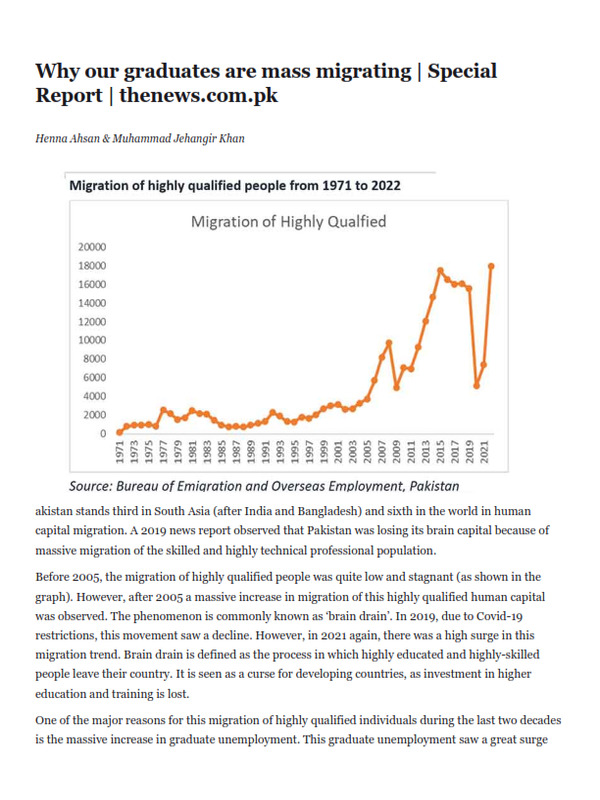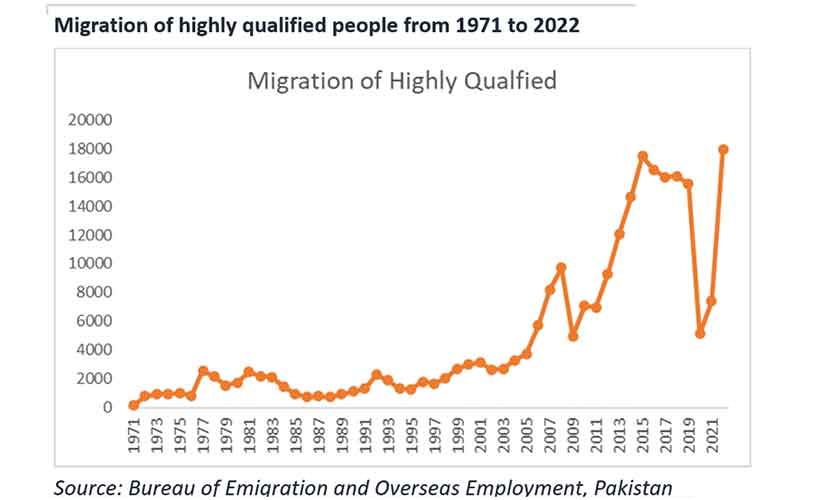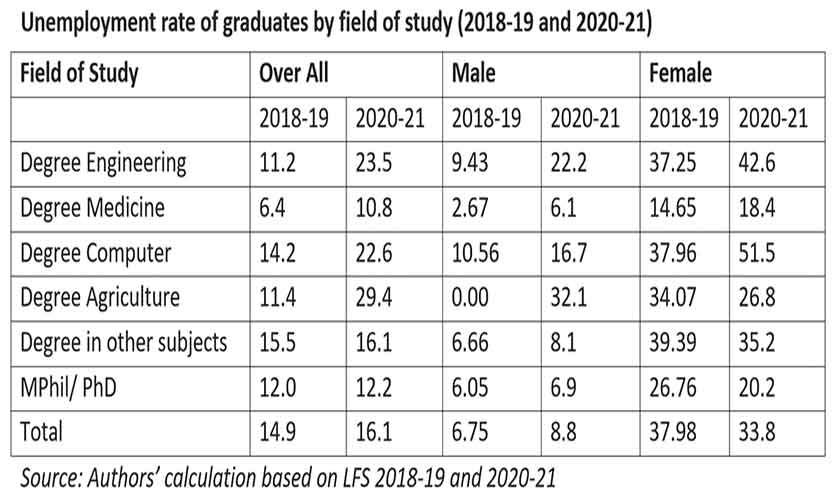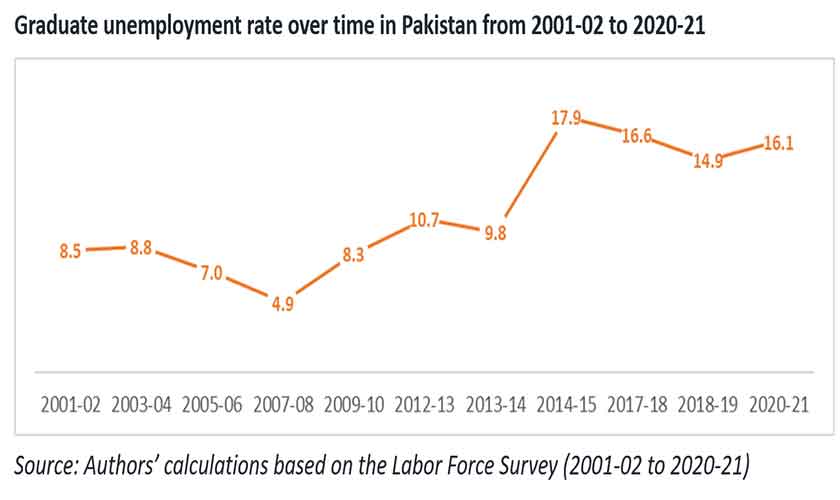Why our graduates are mass migrating
There has been a massive increase in the migration of highly qualified human capital since 2005
Pakistan stands third in South Asia (after India and Bangladesh) and sixth in the world in human capital migration. A 2019 news report observed that Pakistan was losing its brain capital because of massive migration of the skilled and highly technical professional population.
Before 2005, the migration of highly qualified people was quite low and stagnant (as shown in the graph). However, after 2005 a massive increase in migration of this highly qualified human capital was observed. The phenomenon is commonly known as ‘brain drain’. In 2019, due to Covid-19 restrictions, this movement saw a decline. However, in 2021 again, there was a high surge in this migration trend. Brain drain is defined as the process in which highly educated and highly-skilled people leave their country. It is seen as a curse for developing countries, as investment in higher education and training is lost.
One of the major reasons for this migration of highly qualified individuals during the last two decades is the massive increase in graduate unemployment. This graduate unemployment saw a great surge when the University Grant Commission was converted into the Higher Education Commission in 2002. The purpose was to upgrade universities and make access to higher education easier. The number of universities increased from 54 to 233, in just two decades. The average growth rate of higher education observed was 18.5 percent and for primary level, only 3 percent. This supply of highly educated lot and stagnant labour markets contributed to unemployment among these graduates.
Moreover, the rapid expansion in higher education over a short span of time also created heterogeneity of skills in the labour market as most of these newborn universities were not capable of delivering the level of skills demanded by the labour market. It has been argued (Determinants of unemployment: Empirical evidences from Pakistan, Pakistan Economic and Social Review, 2013) that the unemployment rate in South Asian countries is very high due to the lack of market absorption capacity. It has also been attributed to under-utilisation of resources. Talented people, therefore, prefer moving from their home country to more developed countries.
High disparity between the education offered and the capacity of the economy to accommodate these graduates and weak university-industry linkages, meant that graduates being produced were not what was being demanded by the industry. According to the World Bank, Pakistan is ranked 63rd out of 163 countries on the university-industry linkages index. It lags behind India (26th) and Sri Lanka (53rd) on this list. Finally, a shrinking of the economy and macroeconomic imbalances exaggerated the problem. As per a 2015 British Council report, there is a huge gap between supply and demand for education in the region, with corresponding issues of access, equity and quality, particularly with respect to weak curriculum models that lack a strong connection to employer requirements. In many developing countries, including Pakistan, labour markets are unable to accommodate the huge number of skilled labour force the countries are producing.
Industries like cellular telephony and banking sector did absorb the new graduates when these businesses were being rolled out during Gen Musharraf’s regime. However, after a few years, especially after 2010, these markets became saturated and started laying off their labour force. Yet, there was no substantial change in the educational policy.
For the last decade and a half, industrial development in Pakistan has been at a standstill; in fact, it has witnessed a decline. A few years ago, there were six major telecom operators in the country including the PTCL; only four are left. Jazz acquired Warid Telecom and Ufone-PTCL are in the process of acquiring Telenor. Pakistan also faced an acute shortage of electricity after 2007. This power shortage caused many power looms and textile factories to shift to Bangladesh, adding to the unemployment in the sector and migration problem at large.
These alarming stats compel us to analyse the unemployment trend by field of study. The Labour Force Survey (LFS) does not provide segregation for all graduates’ disciplines. It only provides information in major categories like engineering, medicine, computer and agriculture. Nevertheless, this information is useful for comparing the unemployment rate across these disciplines and over a period of time. Our analysis shows that the unemployment rate for graduates increased from 14 percent to 16 percent from 2018-19 to 2020-21. However, when we decomposed the unemployment rate into sub-disciplines, it produced a gloomier picture. The unemployment rate for engineers has increased from 11 percent to 23.5 percent, doubling in just two years. A similar situation has been observed for those who graduated in computer science and agriculture. Graduates in medical sciences face the lowest unemployment when compared to graduates in other disciplines. However, the unemployment rate within the medical discipline too has increased drastically – by 68 percent in two years.
Finally, weak education standards in the country are also responsible for this massive unemployment and subsequent migration. Many educational institutions do not provide quality education and do not train their students as per job market requirements. The education system does not train students from the primary level to graduation and only focuses on rote memorisation, bothering the least about application of what they study.







